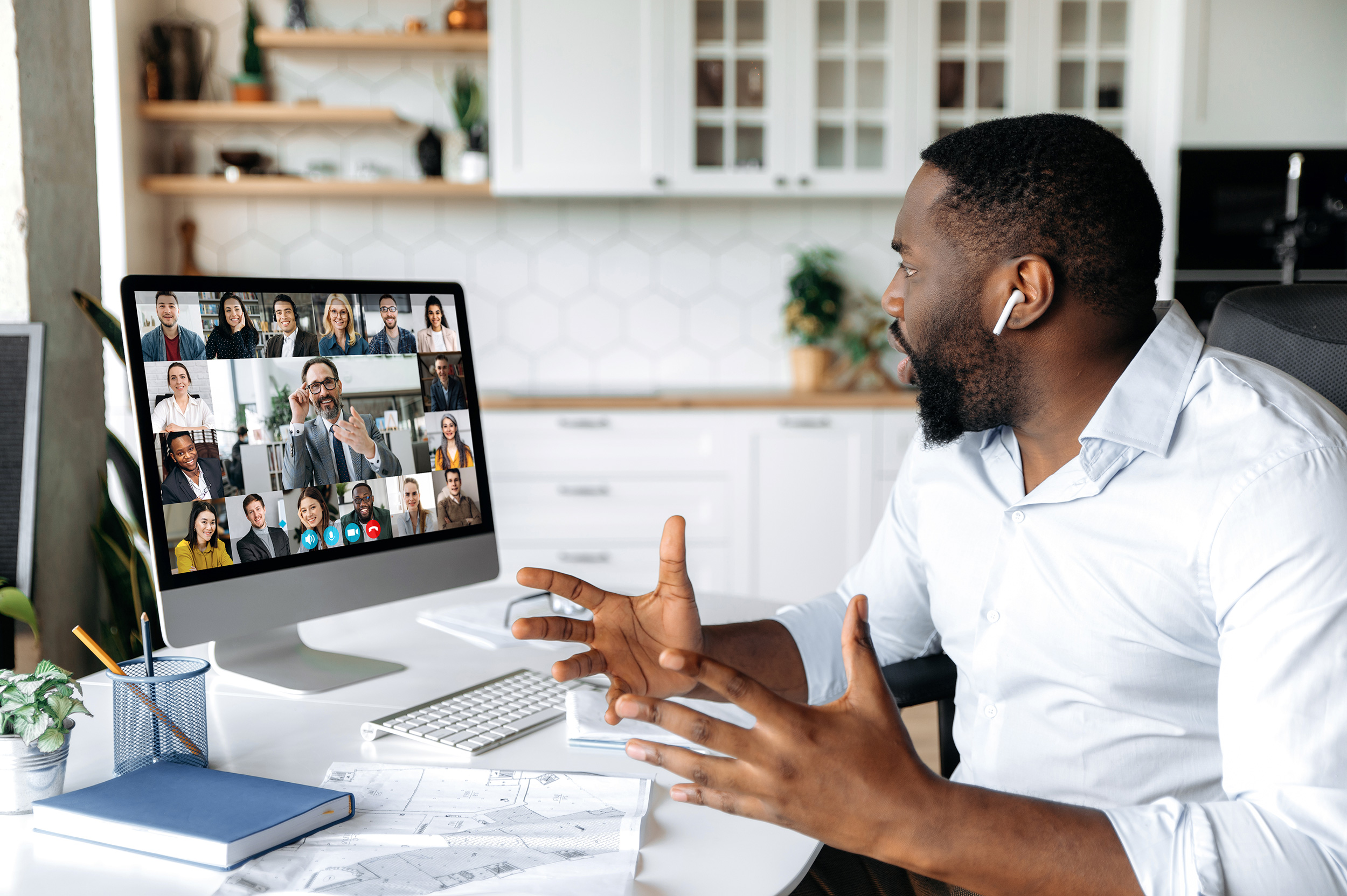“Social distancing is staying away from people not from your purpose.” Amit Kalantri
Peer learning groups, as designed by The Peer Learning Institute, are small groups of up to 6 managers who develop their management and leadership skills using a structured dialogue-based framework. The focus is on encouraging connection, collaboration, open sharing and active learning of best practices in a psychologically safe space. The two sessions of each module were originally intended to be face-to-face.
Recent events have altered how we work, learn and collaborate. This is true for peer learning groups, which have also had to migrate to distance communication. The question is how the peer learning groups can maintain their focus in the virtual world.
Physical distance does not necessarily mean social distance
Keeping physical distance between people for medical reasons is the new normal. However, maintaining a physical distance between people and reducing the number of times people come into close contact with each other does not mean that we should distance ourselves socially. Quite the contrary. We need to find different ways to meaningfully connect that will overcome the physical distance between us.
What is a meaningful connection?
It’s an interaction in which we feel accepted, understood, and supported. We feel heard and cared for. We have a sense of belonging. In a recent post in Psychology Today, Dr. Wayne Baker refers to a meaningful connection as a “human moment”, a term coined by Harvard psychiatrist Edward Hallowell. According to Hallowell, a human moment requires two ingredients: physical co-presence and focused attention. The question is whether it is possible to create virtual human moments when physical co-presence is not possible.
The answer is yes, but it depends on preparation and intentional practices, answers Dr. Baker. He identifies 10 guidelines to promote meaningful connections in a virtual meeting.
Creating Virtual Human Moments
Dr. Baker’s 10 guidelines can help to create the human moments so essential to effective peer learning groups, regardless of the communication platform.
Guideline #1: Video On
The participants in a peer learning group should see and have virtual eye contact with each other, to ensure engagement and active participation.
Guideline #2: Active Facilitation
Peer learning groups should elect one person from the group to facilitate the process and be the timekeeper for the group. The group can rotate the facilitator role for each meeting.
Guideline #3: Acknowledge Reality
At the beginning of each meeting, a peer learning group should acknowledge the reasons for the virtual meeting to make sure that everyone feels comfortable and safe in the virtual setting.
Guideline #4: Gentle Mandatory Participation
The peer learning group agenda should ensure that everyone participates equally. The facilitator can gently guide the group to follow the agenda timeframes.
Guideline #5: Introductions
If the participants do not know each other, they should introduce themselves to the group. If the participants already know each other, they can share something personal or show their current work environment to create a sense of closeness and connection.
Guideline #6: Make it Personal
Rather than being detached or disinterested, the participants should treat each other with respect, actively listening to, encouraging and supporting each other.
Guideline #7: Learn Something New
The purpose of a peer learning group is for the participants to share their knowledge and experience as they learn new best practices. They should learn something new from each other and from provided materials.
Guideline #8: Enable Chat in Big Meetings
Peer learning groups are small, so there is time for facilitated all-group communication and discussion. However, the members can use the chat option to have silent side conversations, pose a question or just make a note of something that can be discussed later.
Guideline #9: Team Practices
The peer learning groups should develop operational rules to guide the meetings and the behavior of the participants. Taking turns to speak and to listen with interest and appreciation are examples of rules that would apply equally to virtual and face-to-face meetings.
Guideline #10. Experiment
Dr. Baker recommends experimenting with these guidelines. A peer learning group can easily adjust its meetings to make meaningful connections in a virtual environment. The group makes the rules and can change and adapt them however necessary to make the meeting a success.
In summary, Dr. Baker’s guidelines can make it possible to duplicate the connection, collaboration, open sharing and learning so important to peer learning group success. If you want to learn more about how to implement a peer learning group program in your organization, please schedule a call with us at https://calendly.com/peerlearninginstitute/
Peter Korynski, Chief Program Officer, The Peer Learning Institute





